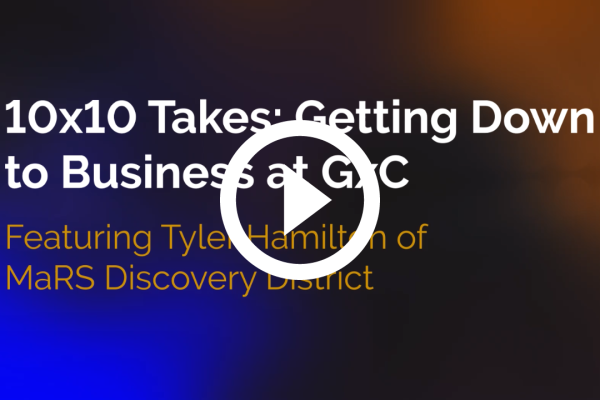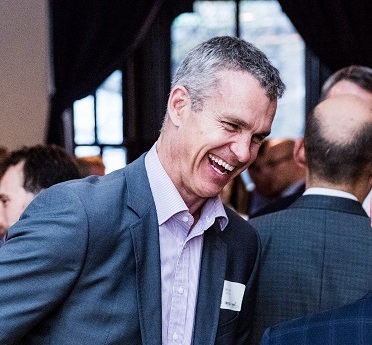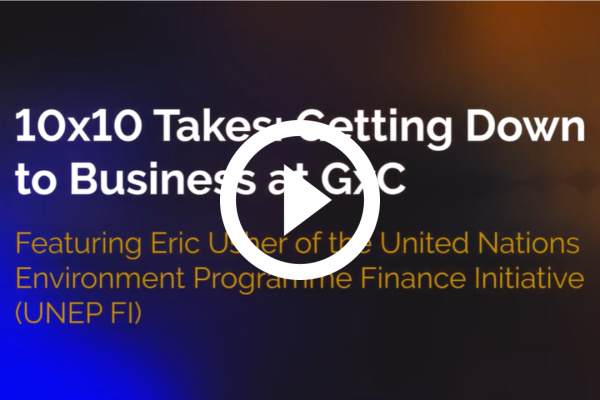In April 2021, Manulife’s Global Chief Sustainability Officer, Sarah Chapman, participated in the Nature is Calling: Invest in Biodiversity or Bust? at GLOBE Capital. This session brought together leaders in this space to discuss the link between biodiversity and the economy, and how we can assess, stop and potentially capitalize on reversing nature loss.
We caught up with Sarah to learn more about how Manulife is creating value through the sustainable management of natural resource investments, biodiversity impacts on portfolio investments, and more.
The mission of Manulife Investment Management Timberland and Agriculture* is to create value through the sustainable management of natural resource investments. What does this look like in practice?
We are in a unique position with our timber and agriculture business: by investing in forests to create carbon sequestration, and other conservation opportunities derived from forests, we can have a positive climate impact.
We’re proud that Manulife is net zero in our operations. We achieved this through the carbon removals from our substantial forests and farmland outweighing our emissions. Manulife Investment Management’s global timberland portfolio team has removed an average of 1.38 million metric tons of CO2 annually by assets owned by Manulife’s general account.
*Manulife Investment Management’s diverse private markets businesses—including timberland and agriculture—have operated within the global wealth and asset management business for decades and recently Hancock Natural Resource Group has changed its name to Manulife Investment Management Timberland and Agriculture Inc.
You’ve recently created a new role of Managing Director, Impact Investing and Natural Climate Solutions at Manulife Investment Management Timberland and Agriculture Inc. to develop impact-first investment strategies. What have been the most promising/exciting opportunities to emerge, and how are your clients responding?
Timberland and agriculture investments can both serve as natural climate solutions, or investments that utilize nature’s own benefits to further climate, ecological and social goals.
The rapid expansion of private sector net-zero commitments and the continued evolution of public climate policies are increasing global attention and appetite for natural climate solutions and driving additional demand to global carbon markets.
Although both represent significant opportunity to generate competitive financial returns and a range of ecological and social benefits, forestry is currently further ahead than agriculture in terms of impact investing and natural climate solutions opportunities. Specifically, forest-carbon markets are well established, with a range of regulatory (compliance) and voluntary methodologies and protocols having evolved over time. Soil carbon also holds enormous promise to help achieve global climate goals and create value for investors, although consistent measurement applications and protocols are still developing.
Manulife is currently developing a Forest Climate Strategy (FCS) to provide clients with a scaleable solution to help meet their net-zero goals. The FCS will prioritize carbon sequestration and high-quality carbon credit generation via third-party validation, verification and registries in addition to adherence with MIMTA’s Carbon Principles that we adopted last year and are aligned with the Taskforce on Scaling Voluntary Carbon Markets (TSVCM) Core Carbon Principles. Other impacts refers to other ecological and social benefits that the FCS will seek to support through long-term protection of high biodiversity and high conservation value land via conservation easement sales as well as non-timber activities like recreation leases and mitigation banking that can support local communities and the environment.
Current clients and investors—Manulife included—are actively developing net-zero goals and action plans, often with expert guidance from organizations like the Science Based Targets Initiative (SBTi). There is a rapidly growing recognition of the unique climate mitigation and sustainable investment role that timberland and agriculture investments can play in client portfolios. We are seeing new interest in these asset classes from a range of investors outside of our traditional client base.
How do you factor biodiversity implications into investment portfolios?
When it comes to investing in biodiversity, there’s a place for scientists: to measure, track, monitor, and verify the impacts and dependencies of investments. We need scientific measurements of species abundance, water quality, and soil carbon.
At Manulife Investment Management Timberland and Agriculture, our timber group employs wildlife biologists who prepare biodiversity indexes for the forests we manage. It’s why we have wildlife and biodiversity guidelines and policies that inform our research processes and how we build our portfolios.
On a more granular level, to ensure that all relevant ESG risks and opportunities are considered in a standardized way across every possible deal, our acquisition teams use our new SRI Toolkit. It has been developed to enable a consistent and structured approach to assessing the characteristics of an investment opportunity.
What impact have green bonds had on the debt market?
The rise of sustainable financing—in which proceeds are used exclusively to fund projects that bring about environment and/or social benefits—has been well documented. Green bonds, in particular, found favour with many investors, having hit an important milestone in September 2020 by crossing the US$1 trillion issuance mark globally since their introduction in 2007.
The impact of green bonds on the debt market continues to grow. Investors are interested in the ability to influence positive change through their investments. Green bonds provide transparency on the allocation of green finance and will hopefully provide transparency on what has been successful (or not), where more funds are needed, etc.
Until recently, knowledge of social bonds was mostly restricted to sustainability practitioners and the investment community; however, the COVID-19 outbreak changed all that. Social bond issuance globally in 2020 soared to more than US$160 billion, up from US$13.3 billion a year ago. The rationale behind the surge? Issuers—which include sovereigns, supranationals, and financial institutions—saw it as a means to help mitigate the socioeconomic impact of the pandemic.
Manulife was the first global life insurer to issue a green bond. The environmental benefit of the General Account’s low-carbon investments that underpin our green bond issuances amount to 150,000+ tonnes of CO2 avoidance. Sample investments include solar and wind energy in the U.S. and Canada as well as sustainably managed forests.
What could change the game in a positive way for impact-first investment strategies?
Public policy and private sector net-zero commitments are increasingly recognizing nature’s critical role in addressing climate change. There are three key factors that could help the supply of natural climate solutions and other impact investing opportunities proliferate and scale to meet this potential increased demand: improved pricing, standardization, and transparency.
Pricing ecological and social benefits that have historically been undervalued—or not valued at all—is critical to incentivize project developers and investors. Carbon markets—specifically for forest carbon sequestration—have developed and evolved over the past decades, although prices have historically been relatively low and volatile. As corporate net-zero commitments continue to increase and investors search for high-integrity, investable climate solutions at scale, demand and pricing for natural climate solutions that generate real, additional and durable carbon sequestration is expected to increase. Co-benefits—or ecological and social benefits beyond carbon sequestration—are already starting to demand price premiums when combined with recognized natural climate solution strategies, such as improved forest management and reforestation/afforestation. Placing a value on other impacts, such as supporting and expanding biodiversity, is quickly evolving in the footsteps of the carbon markets.
Standardization and transparency across diverse natural capital markets will be key to increasing investor and buyer confidence and could help channel capital at scale towards these solutions. For example, the Taskforce for Scaling Voluntary Carbon Markets (TSVCM)—an international multi-stakeholder effort to develop standards, governance and transparency for the voluntary carbon markets—is helping a historically patchwork system of independent protocols, registries and opaque bilateral trades evolve into a more efficient market.
In addition to TSVCM and similar governance efforts, numerous climate and impact exchanges have been established in the last few years to address the market infrastructure needs of credit suppliers, buyers and intermediaries. Many exchanges and intermediaries have established standardized contracts that enable greater comparability across projects. Numerous research and data providers are shining a light on pricing and volume data that was previously difficult to obtain. With increased standardization and transparency, greater clarity on underlying credit quality—and confidence in tangible climate benefits—could follow.
What is the most important thing that investors need to know right now?
Investors need to understand that the enormous task of improving environmental, social, and governance norms is taking place at all levels of society, and the resulting changes will have profound implications for investors.
In turn, investors are increasingly intentional in their efforts to influence positive change. This intentionality is an evolution from previous forms of sustainable investing, which focused solely on the integration of sustainability factors into investment decisions. I think this positive momentum will continue, but investors will still need to navigate and manage increasing pressures from regulators and society to do more.




